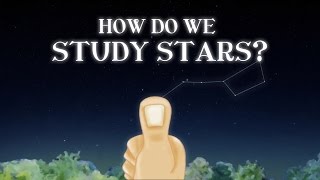(单词翻译:单击)
The city sky is, frankly, rather boring.
坦率地说,这个城市的天空相当无聊。
If you look up at the patches of murk between buildings,
如果你仰望楼与楼之间昏暗的斑点,
you might be able to pick out The Big Dipper, or perhaps, Orion's Belt. But hold on.
你也许能够找出那北斗七星,又或者是猎户座的区域。但是且慢。
Look at that murky patch again and hold our your thumb.
你再看一次那昏暗的斑点,然后举起你的拇指。
How many stars do you think are behind it? Ten, twenty? Guess again.
你认为有多少星星在你拇指的背后呢?十?二十?再猜一次。
If you looked at that thumbnail-sized patch of sky with the Hubble Space Telescope,
如果你用哈勃太空望远镜观察那天空中拇指大小的斑点,
instead of points of light, you'd see smudges. These aren't stars.
你看到的将不是光点,而是“浓烟”。它们不是星星。
They're galaxies, just like our Milky Way.
它们是银河,就像我们的银河系。
Cities of billions of stars, and more than 1,000 of them are hidden behind your thumb.
如繁星般多的城市,当中就有超过1000个城市隐藏我你的拇指后面。
The universe is bigger than you can see from the city,
宇宙比我们在城市中所能看到的更大,
and even bigger than the starry sky you can see from the countryside.
甚至比你在乡村中看到的星空还大。
This is the universe as astrophysicists see it, with more stars than all the grains of sand on Earth.
它有着比地球是的沙粒还多的星星,这就是作为一个天体物理学家所看到的宇宙。
By staring up at the stars at night, you've taken part in the oldest science in human history.
通过整晚盯着那些星星,你已经参与进了人类历史上最古老的科学研究。
The study of the heavens is older than navigation, agriculture, perhaps even language itself.
关于天的研究远远早于关于航海和农业的研究,甚至比语言本身的研究还早。
Yet unlike other sciences, astronomy is purely observational.
然而天文学不同于其它科学,它是纯粹的观察。
We cannot control the parameters of our experiments from lab benches.
我们无法坐在实验室的长凳上掌控实验的参数。
Our best technology can send man to the moon, and probes to the edge of the solar system.
运用我们最好的科技,我们可以把人送上月球以及探索太阳系的边缘。
But these distances are vanishingly small compared to the yawning gulfs between stars.
但相比于裂口海湾恒星之间的距离,这些距离是微乎其微的。
So how can we know so much about other galaxies,
所以我们怎样才能更多地了解其它星系,
what they're made of, how many there are, or that they're even there at all?
它们是由什么构成的,它们的数量是多少,又或者它们甚至不在那个地方?
Well, we can start with the first thing we see when we look up at night: the stars.
好了,当我们在夜空中仰望时,我们可以开始想的第一件事就是星星。
What we are trying to learn is their properties.
我们正在努力研究的是它们的特性。
What are they made of? How hot are they?
它们由什么构成?有多热?
How massive? How old? How far are they from Earth?
有多大?存在多久了?它们离地球多远?
And believe it or not, we can learn all of these things simply from the light shining in the sky.
而且不管你信不信,我们可以简单地从天空中的星光得知这些答案。
We can decipher one kind of stellar message by turning starlight into rainbows.
通过将星光变为彩虹,我们可以破译一种恒星的信息。

When you look at a rainbow on Earth, you're really looking at light from our Sun
当你在地球上看彩虹,你看到的是来自太阳的光,
being scattered through water droplets in the atmosphere into all the different wavelengths that make it up.
光在大气中被水珠散射,形成各种不同的波长,从而产生彩虹。
And we study the light from other stars, we can create rainbows on demand using not water droplets,
我们通过研究来自其它恒星的光,无需水珠,我们也可以根据我们的要求来创造一条彩虹,
but other specific instruments that disperse light.
但其它有特效的仪器会把光分散。
When we look at the scattered light from our sun, we see something strange: dark lines in our rainbow.
当我们在看从太阳射出的光线时,我们注意到有一些奇怪的黑线出现在彩虹中。
These lines are the characteristic fingerprints of atoms.
这些线是原子特有的指纹。
Each type of atom in the solar atmosphere soaks up light at specific wavelengths,
太阳大气中的每一种原子在不同的波长中都吸收了光线,
and the amount of absorption depends on how many of these atoms there are.
而吸收的量则取决于那里有多少这种类型的原子。
So by observing how much light is missing at these characteristic wavelengths,
所以通过观察在这些特定的波长中有多少光丢失了,
we can tell not only what elements are in the Sun's atmosphere, but even their concentrations.
我们不仅可以告诉你在太阳大气中有什么元素,甚至能够告诉你它们的浓度。
And the same idea can be applied to study other stars.
同样的方法可以应用于研究其它恒星。
Make a spectral rainbow, see what's missing, and figure out which elements are present.
做一个彩虹的光谱,看看哪些元素消失了,然后找出哪些元素还存在。
Bingo. Now you know what stars are made of.
你猜对了。现在你知道了恒星是由什么组成的了。
But we aren't restricted to just the wavelengths that our eyes perceive. Consider radio waves.
但我们的研究并不局限于人眼所能看见的波长。想一想无线电波。
Yes, they can bring the Billboard Top 100 to your car, but they can also travel almost unimpeded through space.
对的,它们可以把最受欢迎的前一百个广告带到你的车子里,同时它们也可以中几乎无阻地在空间中穿行。
Because they've come so far,
因为它们已经走了很远了,
radio waves can tell us the very early history of the universe, from just a few thousand years after The Big Bang.
无线电波可以告诉我们关于那段宇宙在大爆炸后几千年的早期的历史。
We can also study the infrared light, emitted by colder objects, like the gas and dust clouds in space,
我们也可以研究由低温物体发出的红外光,比如太空中的气体和尘埃云,
and the ultraviolet light from the hot stars recently born from those clouds.
以及研究那些最近才从尘埃云中诞生的发热星体所发出的紫外光。
Studying different wavelengths not only gives us a more complete picture of any single object
通过研究不同的波长,我们不仅能够对任何单一事物形成更全面的了解,
but also different views of the universe.
也能多角度地了解宇宙。
For this reason, astrophysicists use several different kinds of telescopes
正因如此,天文学家们使用了几种不同类型的望远镜,
covering the spectrum from the infrared to the ultraviolet to the X-ray,
其观察范围覆盖了红外线、紫外线以及X射线,
from giant radio dishes to giant silver mirrors to space satellites,
在太空中的巨型收音仪器、巨型银镜和太空卫星中。
detecting light that would be otherwise blocked by the Earth's atmosphere.
尽可能多地去检测它们,因为它们会被地球的大气层阻隔在外。
Astrophysicists don't just see the billions of stars among the billions of galaxies in the universe.
天体物理学家不能只看到宇宙数十亿星系中的十亿颗恒星。
They hear, feel and sense them through many channels, each revealing a different story.
通过不同的渠道,他们可以听得到、触得到以及感觉得到恒星们各自揭示出来的不同的故事。
But it all begins with light, the kind we can see and the kind we can't.
但这一切都源自光,包括我们看得见的和看不见的光。
Want to know the secrets of the Universe? Just follow the light.
你想知道宇宙的秘密吗?只需跟着光走就行了。


